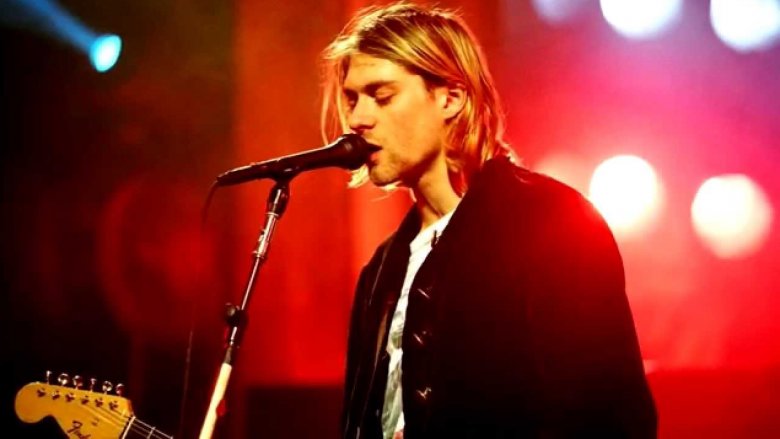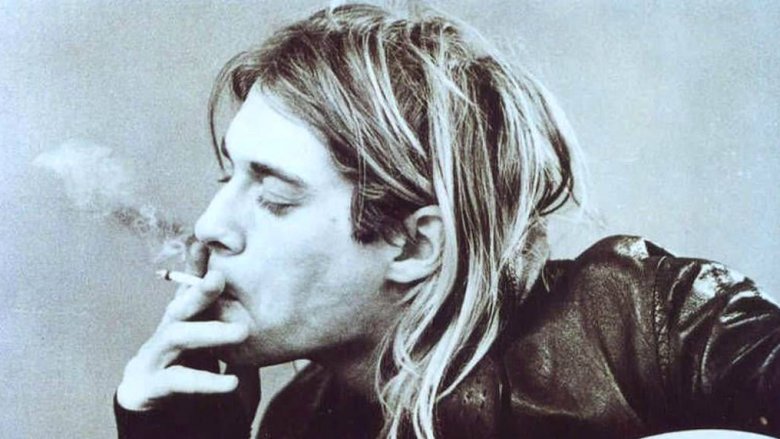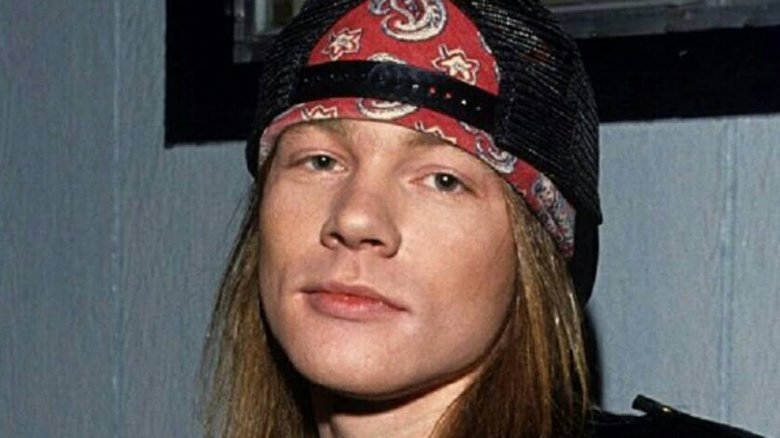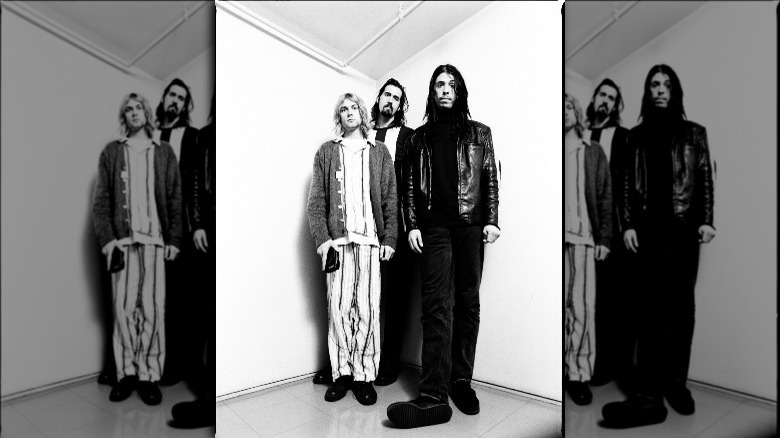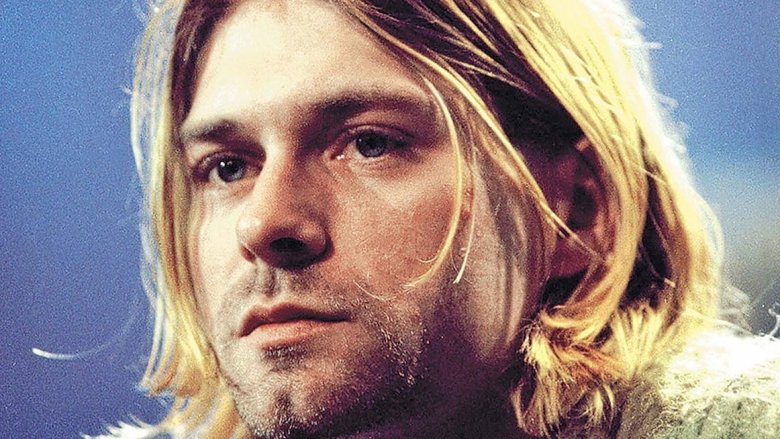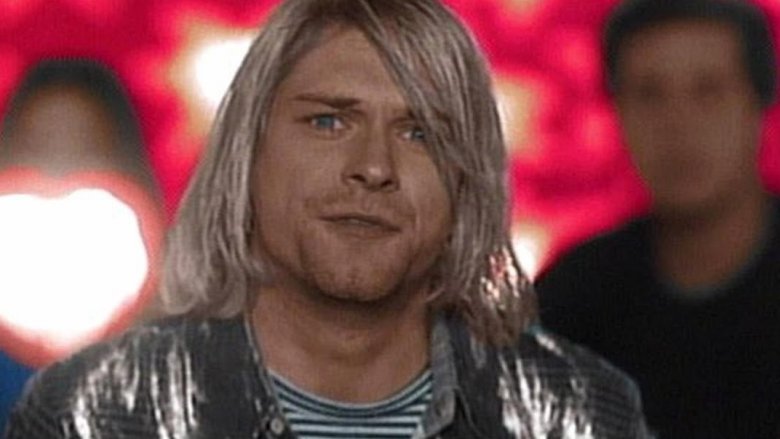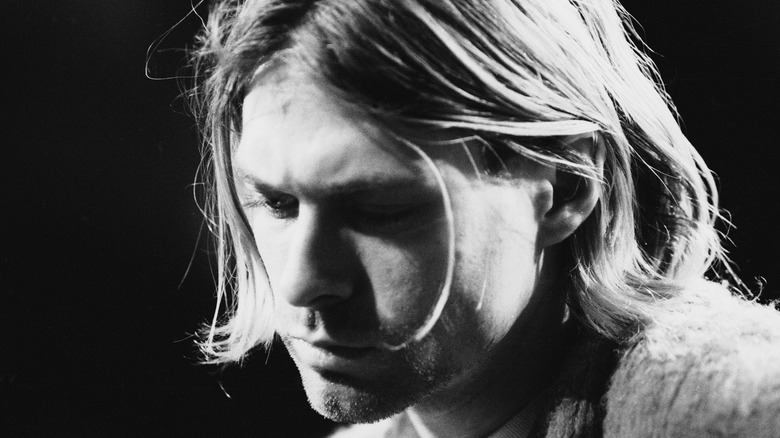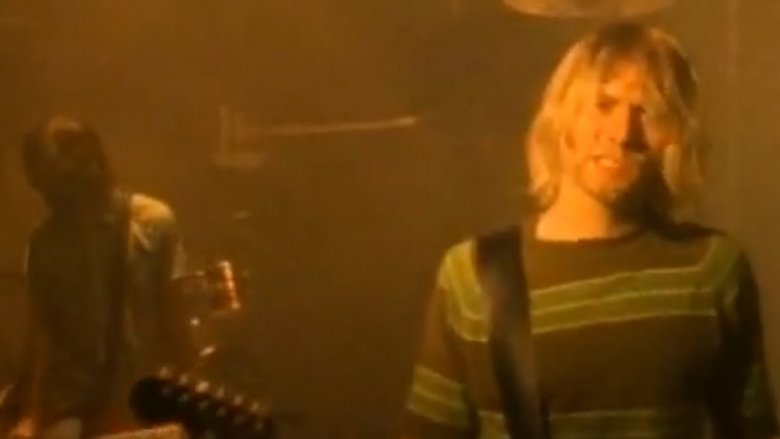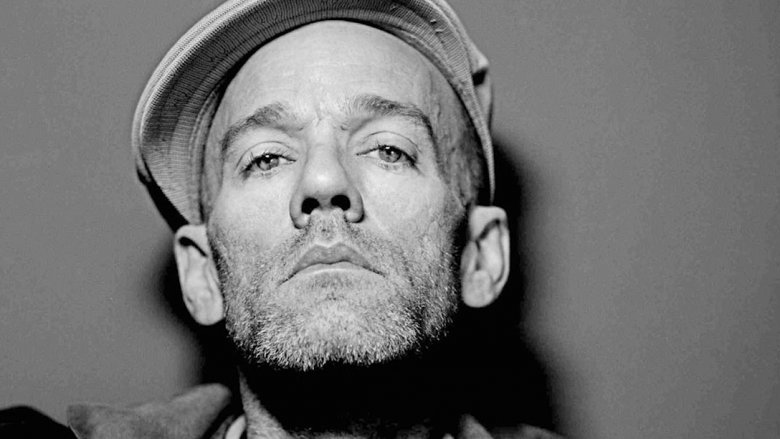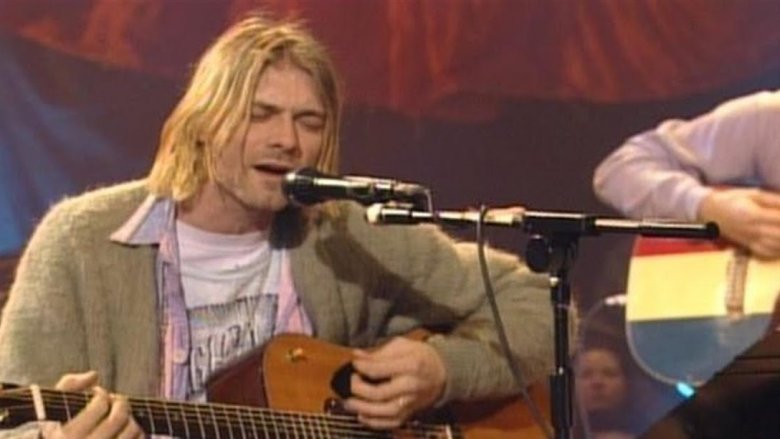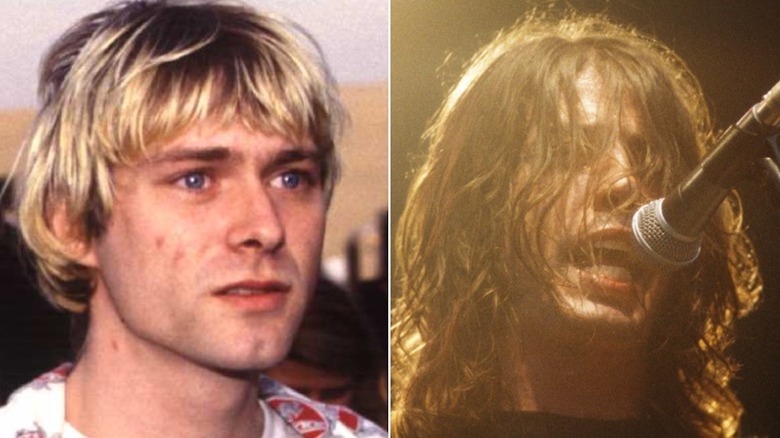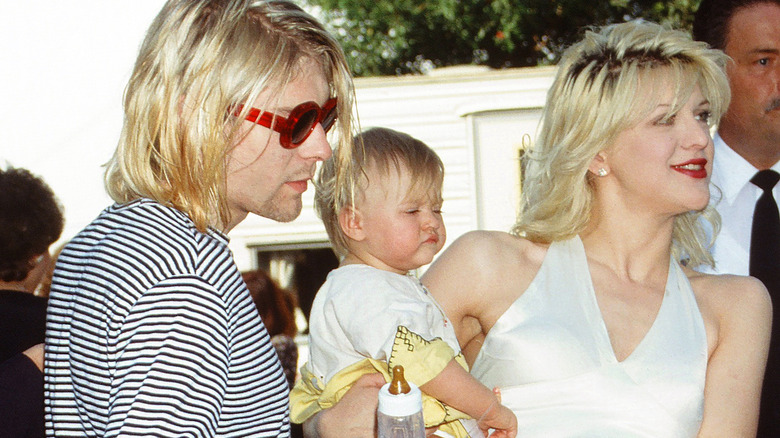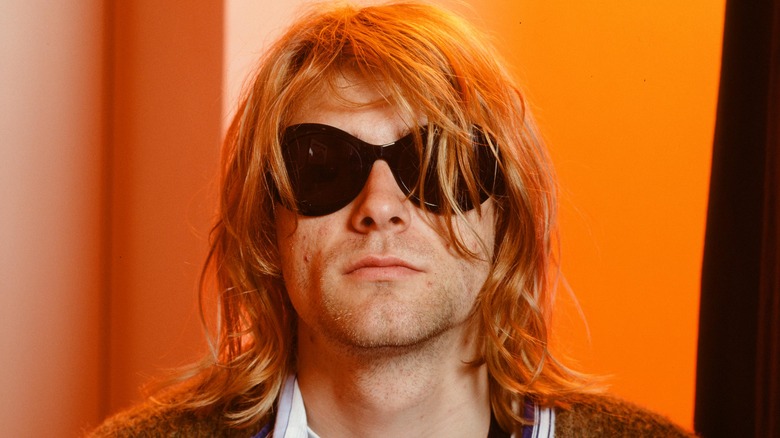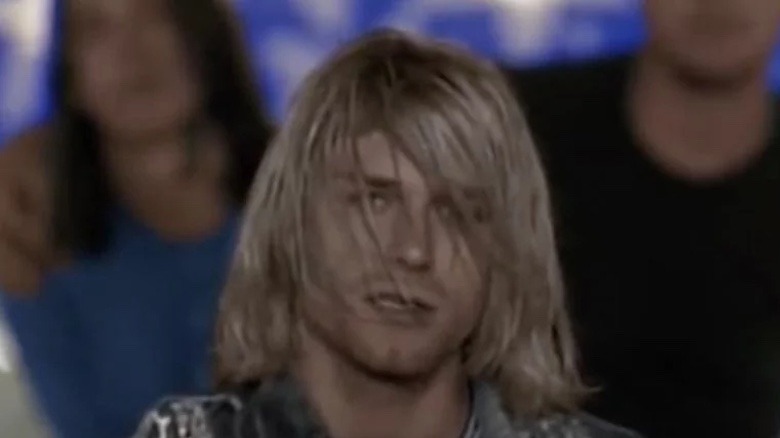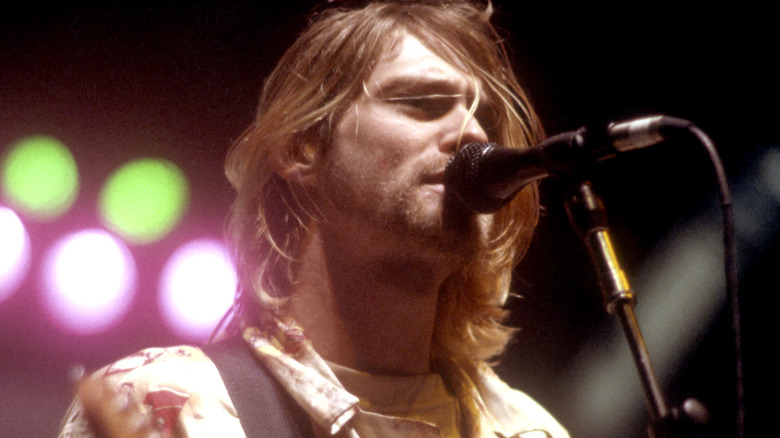Things We Learned About Kurt Cobain Only After His Death
Correction 1/10/24: A previous version of this article stated that Nirvana's MTV Unplugged performance was on December 16, 1993. The performance wasn't on December 16; it was on November 18, 1993.
It's been more than two decades since the passing of alternative music icon Kurt Cobain, and we still know very little about the notoriously private singer. For some reason, scores of disaffected youth glommed onto Cobain and his music, and the way he left the world ensured that we would never get a full picture of the man.
But there were people who knew the real person behind Nirvana. His bandmates, friends who toured with him, and even his family have helped to draw in more of the picture in the years since he died. The stories and facts that we have been given in the last quarter century regarding Kurt are just as mercurial and sad as the little we knew while he was busy running the world for a few short years. Here are some things we have learned about Kurt Cobain since he killed himself in 1994.
If you or anyone you know is having suicidal thoughts, please call the National Suicide Prevention Lifeline at 1-800-273-TALK (8255).
He didn't hate fame, he actively pursued it
Kurt obviously had an aversion to the near-instant worldwide fame that was thrust upon him when "Nevermind" was released in 1991. Anyone would probably have issues with the spotlight cast on them and millions of people idolizing them. It's understandable, then, to bristle at a seemingly neverending slew of interviews, radio appearances, and live performances, especially when you're a shy, depressed early-20-something. But this was Kurt's immediate reality. And it's one that he pretty much set up for himself.
Cobain's aloof, tortured attitude toward fame belied the fact that he got in touch with nearly every major label around, begging for Nirvana to be signed. His own wife, Courtney Love, later revealed that he wanted nothing but to be the biggest star in the world. While he took public stances like promoting little-known indie bands and mocking corporate America on major magazine covers, Cobain desperately contacted record companies, even offering to pay them just to be signed. And indeed Nirvana would sign with the giant Geffen Records label in 1991, just before changing the music world with "Nevermind."
He had a passionate ongoing feud with Axl Rose
Since the release of "Nevermind" signaled a new era of music in 1991, one of the biggest bands of the previous decade, Guns N' Roses, probably didn't take too kindly to its success. Though Axl Rose was an initial Nirvana fan, it didn't take long before Kurt's barbed words directed at Axl's band went public. Various interviews described Cobain as wanting to avoid being anything like Guns N' Roses, saying they had nothing of substance to offer.
Still Axl tried. He even wanted to take Nirvana on tour in 1992. Kurt denied them every chance he got, and that's when Rose started to take shots of his own, calling Kurt and wife Courtney Love junkies and saying their infamous drug problems should land them in prison if their baby were born with any medical issues. This all came to a head at the 1992 MTV Video Music Awards, which both bands attended. Backstage, Axl came upon Kurt and Courtney with their little baby, and Love joked out loud that Axl should be the godfather. Axl told Kurt to "shut your b*tch up." You know, friendly words.
Later that year Kurt would tell The Advocate that Axl and Guns "couldn't write good music," adding that Rose was a racist and a homophobe. Ironically, Guns N' Roses bassist Duff McKagan would share an amicable plane ride with Kurt just before he died.
Kurt overdosed immediately after his breakthrough Saturday Night Live performance
"Saturday Night Live" gave bands unprecedented access to the mainstream music listening audience, and that was even more so the case in the early '90s. Grunge wasn't on everyone's radar yet, and the show was at a creative and commercial peak. That recipe ensured that millions of people were watching when Nirvana first took the "SNL" stage in 1992. They played their landmark hit "Smells Like Teen Spirit" and then tore through "Territorial Pissings" before destroying every bit of gear onstage that they could. Then they finished off the show by making out passionately as a band during the curtain call/credits roll. It seemed the band was in high spirits and ready to usher in a new age of music. In fact, that very performance helped the band dethrone Michael Jackson from the top of the charts.
But that's not how it was for Cobain. He skipped the traditional cast afterparty and retreated to his hotel room. Once there, he overdosed on heroin. Courtney Love found him the next morning and was somehow able to revive him by throwing cold water on his face and punching his chest. Apparently he stayed in the good graces of the late-night comedy show because Nirvana played the stage again the next year.
Suicide ran in Kurt's family and surroundings
The Washington town Kurt grew up in had a suicide rate that was reportedly twice the national average. Add to that extremely high rates of drug addiction and unemployment, and you have a grim outlook. But Kurt may also have been genetically predisposed to suicidal thoughts, as several people in his family had also killed themselves. Kurt was one of the biggest stars in the world, constantly under the microscope that fame brings with it. It's interesting, then, that the public did not pick up on the tragic family history that Cobain didn't try very hard to keep hidden. Kurt's uncle Burle took his life in 1979 with a gunshot to the abdomen. Another uncle died by suicide five years later, also using a gun. Depression and suicidal thoughts are difficult to deal with, and resources at the time were significantly less common.
If you or anyone you know is having suicidal thoughts, please call the National Suicide Prevention Lifeline at 1-800-273-TALK (8255).
Kurt wanted William S. Burroughs to star in the Heart Shaped Box video
Kurt liked provocative, weird imagery. Nirvana's music videos were no exception. When "In Utero" dropped in 1993, featuring a transparent anatomical female model with angel wings on the album cover, it seemed the next logical step would be to also get attention with the videos for the singles. Unfortunately, only one song would get the video treatment before Kurt passed. That was "Heart Shaped Box." Kurt had a slew of images ready to be put to film that would turn heads worldwide, including a little girl in Ku Klux Klan garb, a field of poppies, and an elderly Jesus on a cross.
The man Kurt had in mind to play that last character was famed writer William S. Burroughs, with whom Cobain had collaborated with on a spoken poetry album. Though the two had never actually met in person, there was a good deal of respect both ways. Once production of the "Heart Shaped Box" video was nearing, Cobain had already filled his journal with direction and images of how he wanted to showcase Burroughs. Alluding to his own increasing notoriety, Kurt assured the writer that his drug use wasn't any kind of desire to mimic Burroughs' own life. Burroughs declined to take part, but he did have Kurt out to his Kansas home for a visit in fall 1993. His takeaway? "There's something wrong with that boy. He frowns for no good reason."
Kurt became addicted to heroin by trying to medicate his stomach pain
If anything, Kurt was honest about his demons. Where many people would lay blame at the feet of others, he (at least sometimes) was brutally honest about the negative aspects of his life. So when he discussed his drug use, it wasn't the typical depression, or instant stardom, or access to more and better drugs that many celebrities have fallen prey to. Cobain dealt with those things, sure, but he also had a chronic lifelong stomach problem that many doctors had little actual help for. Some said it was irritable bowel syndrome. Others thought it might be celiac disease, something that was far less diagnosed and understood at the time. Cobain claimed he suffered from constant pain for six straight years just before he died.
One thing that brought him temporary relief was heroin. He began to self-medicate with the drug when his discomfort escalated in the late 1980s, as he began to experience vomiting and intense pain from his mystery illness. The more he treated it with heroin, the quicker he became a full-fledged addict. Marrying Courtney Love, who had her own relationship with the drug, didn't help, but it was his excruciating stomach pain that first led him to heroin.
Kurt made up large parts of his life story
Buzz Osborne was one of the closest people to Kurt in his formative years. The Melvins front man toured with Kurt and even went to high school with him. The recent documentary "Montage of Heck" told the story of Kurt's life, but it was mainly from Kurt himself, drawing upon his interviews and journals to tell one side of the truth. Buzz Osborne has spoken up to call shenanigans on much of what the doc has to say about Cobain. A few stories in the film have Kurt detailing trying to have sex with a developmentally disabled girl or trying to kill himself on train tracks. Osborne says these stories never happened. He adds that Kurt was a master of spinning tales to get reactions from people.
Another Cobain story was that he lived under a bridge in his native Aberdeen for a time when he was homeless, and that it inspired the "Nevermind" song "Something in the Way." The truth is that while Cobain did experience a brief spell of homelessness, he instead stayed at friends' houses until he got back on his feet. Both his sister Kim and bandmate bassist Krist Novoselic dispute the story in the biography "Heavier Than Heaven."
R.E.M.'s Michael Stipe tried to save Kurt by attempting a collaboration
During Kurt's final days alive, one constant in his tormented life was the soothing voice of R.E.M.'s Michael Stipe. Cobain had the album "Automatic for the People" on near repeat, and it was even playing in his CD player when he took his life. Kurt so admired Stipe and R.E.M.'s music that he wanted Nirvana's fourth album to have that kind of feel. Stipe also had mutual respect for the Nirvana singer and could tell he was going through incredibly tough times. So Stipe says he tried to save him.
Stipe worked tirelessly to arrange a duet with Kurt in the last couple months of his life, even going so far as to send a plane ticket and a driver to pick him up and take him to the airport. Kurt got the ticket but just hung it on his wall. The driver waited outside for ten hours. Kurt wouldn't leave his room or answer his phone. It was a lost cause. In the ensuing years, fans read into this potential meeting as an entire album project, but Stipe says he was just a friend trying to help out another friend who was in a very bad place.
The famous Nirvana Unplugged show came close to not happening
November 18, 1993, was the last day most Nirvana fans saw Kurt Cobain. That final appearance was Nirvana's MTV "Unplugged" performance, a towering swan song for the band, even if they didn't know it at the time. Kurt led his band through haunting acoustic renditions of their songs on a stage that was fashioned to resemble a wake.
But it almost never came to be. Kurt was in the throes of heroin addiction, and relationships within the band were strained almost to the breaking point. MTV execs were perturbed, as Nirvana wasn't planning to play some of their biggest hits, including "Smells Like Teen Spirit." Instead, Kurt planned several obscure songs and wanted to have a member of the Meat Puppets share the stage for a few songs. The day before the taping, Kurt announced that the show was off entirely, in what ended up being some sort of weird power play. He quickly reneged, but the morning of the taping, his poor health threw another curveball, as he was vomiting blood and bile just hours before going on camera. With his nerves rattled, he pleaded for all the people he knew to sit in front, close to the stage. He made it through, and history was made, but the seminal live album almost never came together.
His relationship with Dave Grohl was a little tense
When Kurt Cobain died in 1994, Nirvana ended. A year later, according to Kerrang!, drummer Dave Grohl released his first album by Foo Fighters, a band that would eventually be a major act, but which started as a solo project — Grohl played nearly every instrumental part and wrote all the songs, which he'd been amassing for years. "When Nirvana was on tour, I'd bring a guitar with me, so in hotel rooms, late at night, I'd have something to do," he told Guitar World. "Eventually, I was living with a person who had an 8-track in the basement. And these songs just started coming out."
Reluctantly, Grohl played some of the songs for Cobain, including one completed track set to appear on a compilation. "He kissed me," Grohl recalled to Vulture. "In no way did I think, like, 'Okay, this is going to be on the next Nirvana record.'" Grohl shared that while Cobain liked the music, "he didn't like the lyrics and he didn't want to ask me if he could change them. So we never used it."
Cobain also may have been less than fond of Grohl's drumming. Just before rehearsals for the tour in support of "In Utero," Grohl overheard Cobain tell bassist Krist Novoselic, "I think we need. Drummer that's more rudimental." It startled him, but after he confronted Cobain about it, the frontman decided to not make a change after all.
Kurt Cobain and Courtney Love's marriage was in trouble
Kurt Cobain's marriage to fellow rock star Courtney Love (of the band Hole) was publicly tumultuous. But the pair remained together and unequivocally married at the time of Cobain's death in 1994. However, according to the ex-husband of the couple's daughter, the Nirvana frontman was strongly considering breaking things off with Love, possibly even planning a formal, legal divorce.
In 2018, according to Spin, Isiah Silva, former spouse of Frances Bean Cobain, filed a civil suit against Love, accusing her of participating in a plan to kidnap and murder him because he reportedly was in the lawful possession of the guitar used by Kurt Cobain in Nirvana's 1993 "MTV Unplugged" special. According to Alternative Nation, Silva attested that Cobain had filed for divorce, and that after the singer's death, Love burned the divorce paperwork to erase it from existence — information he received from Cobain's mother, Wendy O'Connor.
All that is supported by a handwritten note the Seattle Police Department found in Cobain's wallet when he died in 1994 but not publicly released until 2014, per Metal Sucks. In it, Cobain characterizes his wife as "a b**** with zits and siphoning all your money for dope and wh*****."
Kurt Cobain attempted suicide in the late 1980s
Driven to deep despair by a history of mental illness and chronic stomach pain, Kurt Cobain committed suicide at his Seattle home in 1994, according to Rolling Stone. What's all the more tragic and sad about that event is that it didn't occur in a vacuum — it wasn't the first time Kurt Cobain attempted to end his own life.
In 2015, HBO released Brett Morgen's documentary "Kurt Cobain: Montage of Heck." In audio-only footage of Cobain played in the film, the musician discusses his troubled high school years in rural Washington state in the mid-to-late 1980s. He'd decided to commit suicide but not before he'd experienced the physical act of love, and he propositioned a developmentally disabled classmate, from whose father Cobain and his friends would steal alcohol. News of Cobain's exploits quickly made the rounds around his school. "The next day, everyone was waiting for me to yell and cuss and spit at me," he recalled (via Rolling Stone). "I couldn't handle the ridicule." Distraught, he lay on tracks to wait for a train, which unexpectedly took a different route.
If you or anyone you know is having suicidal thoughts, please call the National Suicide Prevention Lifeline at 1-800-273-TALK (8255).
Nirvana could have been named something else
Kurt Cobain once told Rolling Stone (via Stereogum) that he picked the name Nirvana because he "wanted a name that was kind of beautiful or nice and pretty instead of a mean, raunchy punk name like the Angry Samoans." Nirvana — a term for a blissful state of being in Buddhism free of pain, misery, and worldly concerns — fit the bill. According to "The Big Book of Rock & Roll Names," the band tried out other names before settling on Nirvana, including Fecal Matter, Ted Ed Fred, and Skid Row (ultimately used by contemporary hair metal band Skid Row).
It wasn't until the release of the 2015 HBO documentary "Kurt Cobain: Montage of Heck," that Nirvana's other possible band names were widely disseminated. According to the film (via Rolling Stone), Cobain jotted down his ideas in a notebook, including "The Reaganites" (reflective of the band's formation in the waning years of the Ronald Reagan presidency), as well as "Elvis Cooper," "Boy in Heat," the homonymous "Window Pain," "The Mandibles," the naughty portmanteau "Erectum," the gross "Nagging Rash," and the Nirvana-esque "Bliss."
Kurt Cobain recorded lots of unreleased music
During his lifetime (1967 to 1994), Kurt Cobain never released any music under his own name — his recorded legacy consists of a handful of Nirvana studio albums and some live tracks and B-sides. Had he lived past the age of 27, his fans may have gotten to hear a voluminous amount of extracurricular-to-Nirvana, Cobain-branded solo recordings.
In a 2012 interview with Fuse, Hole guitarist (and "Letters to Kurt" author) Eric Erlandson discussed his late friend's post-Nirvana ambitions. He "was headed in a direction that was really cool. It would have been his White Album," Erlandson said, comparing Cobain's work to that of the Beatles. Some demos and home recordings surfaced on Nirvana anthologies over the years after Cobain's death — including a tie-in with the 2015 documentary "Montage of Heck" — but nothing of the magnitude that Erlandson suggested. Somewhere out there, there's a recording of Cobain performing a "sweet" cover of a well-known song and at least an album's worth of unheard material.
